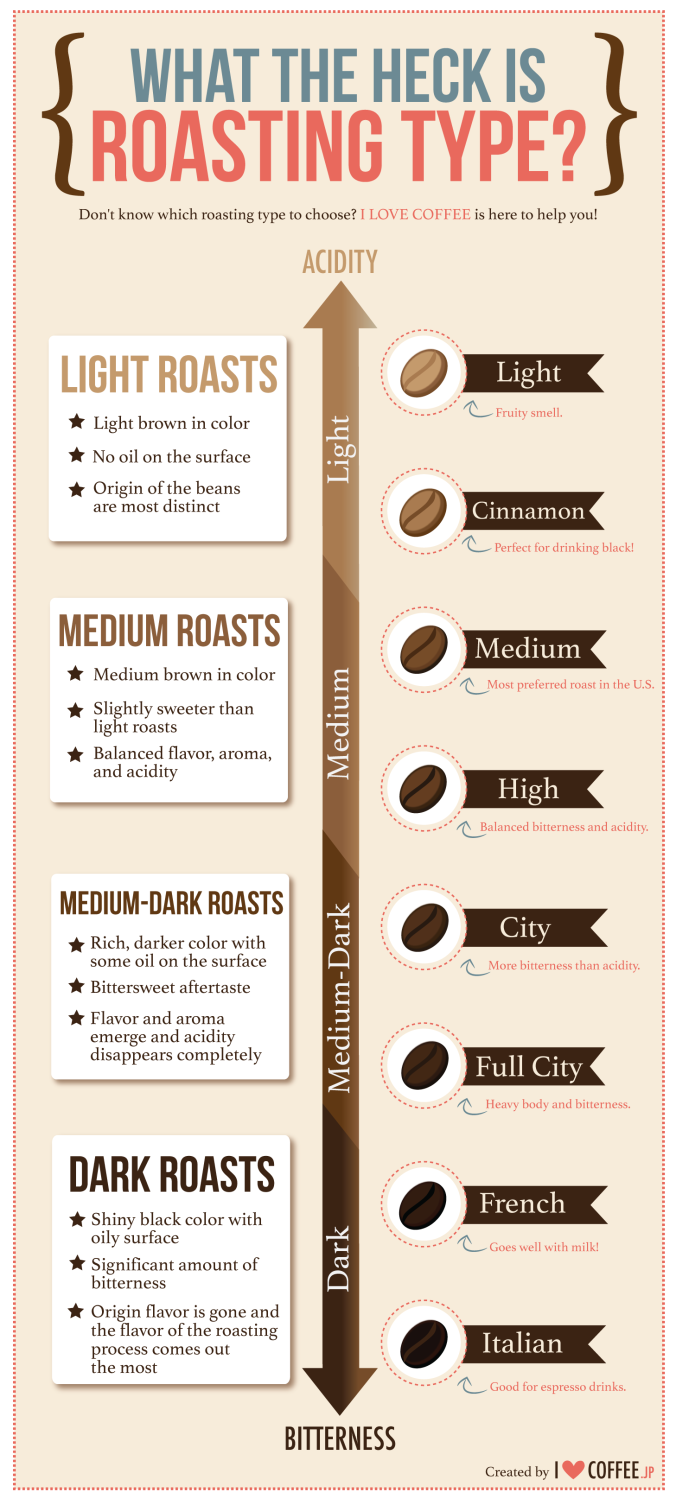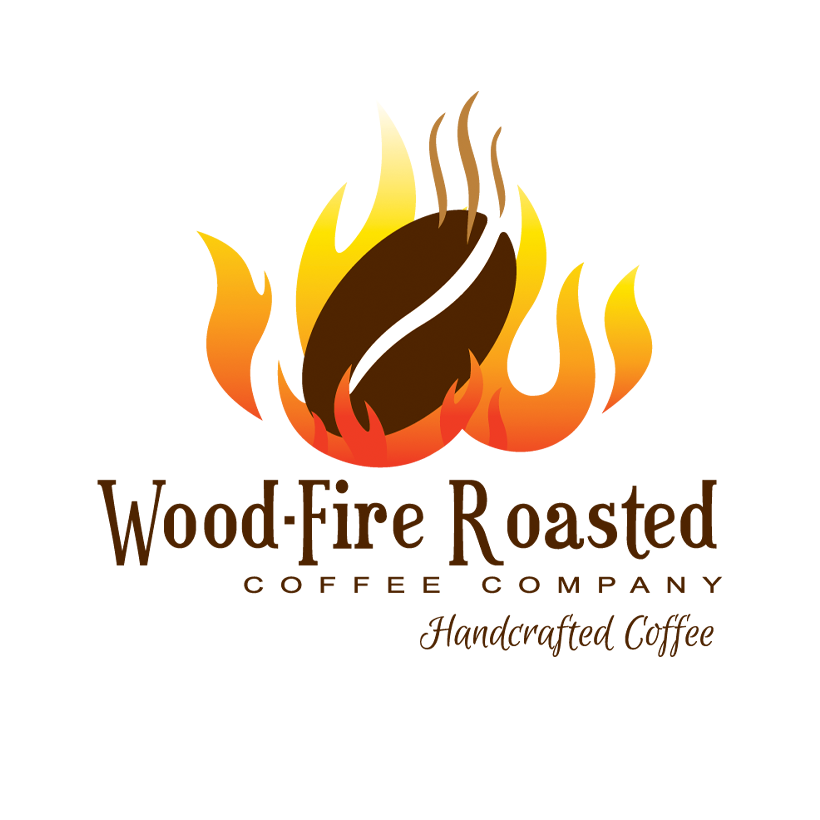Pick Your Roasts Like an Expert
“I like a strong cup of coffee, one with some kick…”
“I like a dark roast.”
These are two of the most widely heard phrases by coffee roasters seeking to determine how best to please the palate of their customers. Strength, as in “I like a strong cup of coffee,” refers to how you brew your coffee, not how it’s roasted. So let’s delve into roasting first.
Coffee roasting is a near-perfectly balanced blend of art and science. Some roasters lean more towards the art, some towards the science. Many coffee creators do what they do, serve what they serve and roast what they roast. If customers don’t like it, they can go elsewhere.
Yet there are others, like Owner/Roaster of Wood-Fire Roasted Coffee Company (WFRCC), Tim Curry, who have something to meet every customer’s tastes. Sometimes it just takes a little creative exploration to get to the heart of their preferences.
Not everyone lives and breathes coffee roasting, and roasters like Tim don’t expect everyone to know exactly what the terms mean. So here we are to help…
Many Shades of Delicious
Coffee beans’ preliminary state is far from their finished: green.
These fresh little pods plucked from bushes around the globe are far from what they will turn into once placed in a roaster. That’s where their flavor- and aroma-filled nuances emerge. Their initial flavor and aroma is grassy, botanical and something most folks wouldn’t want to grind up and steep in water.
The typical strata of roasts range from light to very dark. In between are medium-light, medium, medium-dark and dark. On a numerical gourmet roasting scale, they range from 100, being an undeveloped bean, to 20, which is extremely dark. Zero is charred back to carbon. Check out this great “Guide to Roasting Types” infographic by ILoveCoffee.jp and NationalCoffeeBlog.org for some easy visual comprehension.
Tim at WFRC typically roasts his from medium-light and dark, or between 65 and 35. His happy place roasting over the open flame of his traditional Italian roaster is when he finds the ideal balance of the fruity, floral acidic characteristics found in lighter roasts, and the dark chocolatey, nutty notes of darker roasts.
This ideal balance is only found after much experimentation. That, and using the knowledge only years of roasting and studying the different regional characteristics and temperature affectations can provide.
Understand that roasters can be as diverse as the beans they curate. Minimum-impact roasters prefer lightly roasting their beans, letting the regional characteristics shine in their coffees over letting the roast drive the flavor profiles.
Others, like Tim — who is often called the “Coffee Whisperer” — prefer to experiment and let the beans dictate the roast.
“I like playing with the potentials and finding the roast style that, in my opinion, unlocks the best flavor characteristics hidden within the beans,” Tim of WFRC says.
For instance, he recently acquired some renowned Panama Geisha beans. To find the best possible roast, he began with a light roast to identify the beans’ main characteristics. Then he went to the “dark side”, deeply roasting them to see how they behaved. From the two extremes, he found a happy-roasting-medium he felt made the Geisha’s true characteristics shine to near perfection, which he then offered to customers.
A Tableau of Tastes
The next time you’re loving your coffee, hone in a bit on what it is that you love.
Do you enjoy more fruity, acidic components and flavors? More nutty, chocolatey flavors? Creamy caramel notes? A more creamy mouthfeel? Identifying your specific tastes helps determine what roast you should pick.
Here are some basic guidelines:
Light/Cinnamon Roast = more fruity, grassy notes
Medium-Light/American Roast = Acid-rich, lingering fruity and botanical notes
Medium/City Roast = Acidity begins muting, regional characters remain with creamy mouthfeel
Medium-Dark/Full City/Vienna Roast = Roast tones of chocolate and nuts move to the forefront.
Dark/Italian Roast = Slightly oily, muted acids
Very Dark/French Roast = Fully-muted acids, bittersweet chocolate notes
Extreme Dark/Volcano Roast = Burned, bitter tones
Get Your Kicks
Now, let’s go back to the caffeine question.
Contrary to popular belief, roasting generally doesn’t impact caffeine content much. Miniscule size differences aside, let’s say that most Arabica beans have an equal amount of caffeine within their little casings. During roasting each bean maintains its level of caffeine. Also during roasting the beans expand and become less dense the deeper the coffee is roasted. With this information we can have a conversation about the impact of roast on caffeine; Lighter roast coffees measured by volume will present significantly more caffeine, in the cup, than darker roast coffee measured the same way. Conversely, lighter roast coffees measured by weight will present less caffeine than darker roasted coffee, in the cup, measured also by weight. What it all comes down to is this. Brew your coffee to its best flavor, that is how I roast it, and the caffeine will be there for you as you enjoy a fabulous cup.
While we’re on the subject of “strong” coffee and “kicks,” if you’ve ever noticed that your cup of joe gives you the ability to run a marathon all of a sudden, it may be mixed with another type of bean. Robusta is an entirely different species packed with caffeine, and often mixed with Arabica by some to-remain-nameless coffee purveyors. (Never have roasted Robusta coffee, never will.)
